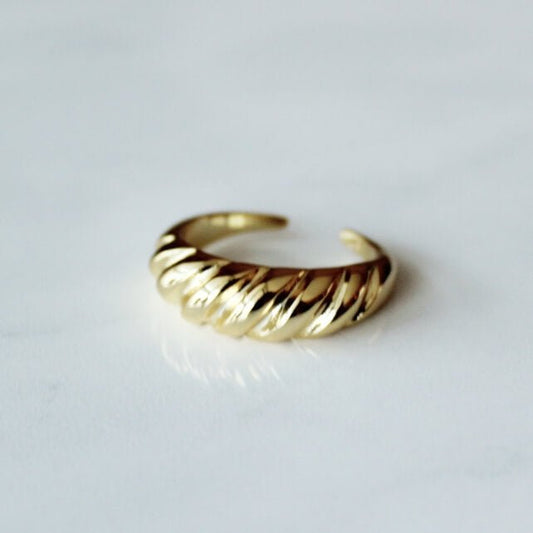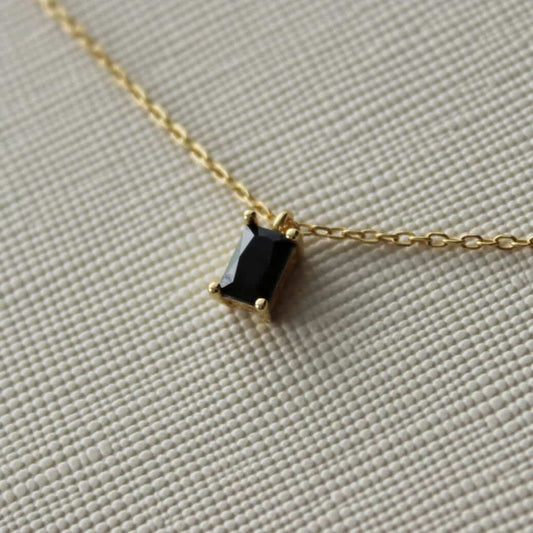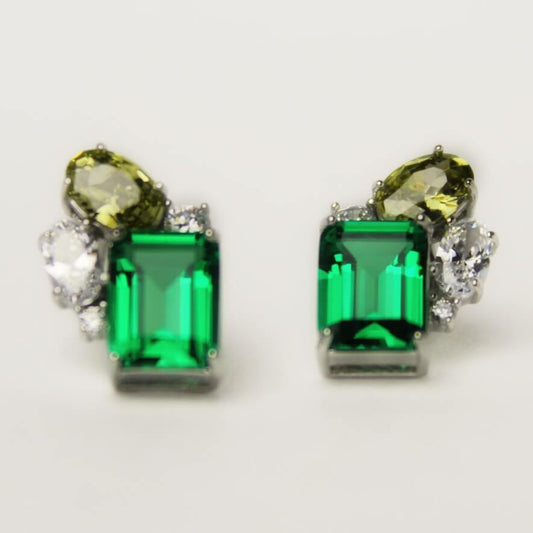Opals are a gemstone that have been valued for their beauty and symbolism throughout history. Depending on the culture and time period, opals have been associated with different meanings and beliefs.
In ancient times, they were believed to symbolize hope, purity, and truth, while in medieval Europe they were thought to provide protection against disease and bad luck.
During the Renaissance, opals were seen as a symbol of luxury and were believed to confer invisibility. In the Victorian era, opals were associated with reflecting the mood of the wearer.
Are there symbolic meanings behind opals?
Today, opals are often associated with creativity, inspiration, and intuition, and are a popular gemstone for jewelry. Its often easy to dismiss an opal’s beauty these days, but imagine uncovering this rare and precious stone 1000 years ago. With its iridescent colour play it must’ve felt like holding magic itself for people in ancient times.
Let's delve deeper into the symbolic meanings of opals and how they have evolved over time. From the ancient Greeks and Romans to modern-day cultures, opals have held a special significance and have been used in a variety of ways.
By exploring the different cultural and historical contexts in which opals have been used, we can gain a deeper understanding of the enduring appeal and symbolism of this beautiful gemstone.
Opals in Ancient Times
Opals have been prized for their beauty and symbolism for thousands of years, dating back to ancient civilizations such as the Greeks, Romans, and Egyptians. In ancient times, opals were believed to possess magical properties and were often used in jewelry and amulets. The ancient Greeks associated opals with the god of prophecy, Apollo, and believed that the gemstone could reveal the future. The Romans also valued opals for their mystical properties, with Pliny the Elder describing opals as having "the fire of the carbuncle, the purple of the amethyst, and the sea-green of the emerald, all shining together in incredible union."
In addition to their magical properties, opals were also associated with various symbolic meanings in ancient times. For example, the ancient Greeks believed that opals symbolized hope, purity, and truth. The Egyptians also valued opals and believed that the gemstone could protect the wearer from harm. Opals were also commonly used in ancient Roman jewelry, with the gemstone often being carved into cameos or intaglios.
It is important to note that the specific type of opal used in ancient times may have varied. However, in general, opals were highly valued and were considered to be a symbol of power, status, and mystical energy.
Medieval times and opals
Opals were particularly popular during medieval Europe and were believed to possess powerful protective properties against disease and bad luck. In fact, they were thought to be so potent that they were often ground up and consumed as a cure for various ailments. The specific type of opal that was popular during this time period was the black opal, which was mined in Hungary and known for its dark body color and vibrant flashes of color.
In addition to their medicinal properties, opals were also associated with other symbolic meanings during the medieval period. For example, they were thought to symbolize purity and innocence, and were often used to adorn religious objects and clothing. Opals were also believed to be a stone of love and loyalty, and were often given as gifts to symbolize deep devotion and fidelity.
Overall, opals played a significant role in medieval Europe and their symbolism and popularity continues to endure to this day.
Opals in the Renaissance
During the Renaissance, opals were highly sought after and were considered a symbol of luxury and status. Royalty and nobility adorned themselves with opals, as they were one of the most expensive and prized gemstones of the time. However, not all opals were created equal, and the most highly valued were the "Black Opals" from Lightning Ridge, Australia. These opals were known for their dark body tone and vibrant flashes of color, and were especially popular during the Renaissance.
In addition to their status as a luxurious gemstone, opals were also believed to have mystical properties during the Renaissance. It was believed that opals had the ability to confer invisibility upon their wearer, and that they could protect against disease and ward off evil spirits. This belief in the magical powers of opals added to their allure and contributed to their status as a highly prized gemstone.
The fascination with opals during the Renaissance is evident in the art of the time period. Many Renaissance paintings feature opals as a prominent element, such as in the portrait of Queen Elizabeth I of England, who famously wore a large black opal ring. The symbolism of opals as a status symbol and a magical gemstone continued throughout the Renaissance and has contributed to their enduring popularity as a gemstone today.
Opals in the Victorian Era
During the Victorian era, opals experienced a surge in popularity as the discovery of black opals in Australia led to a renewed interest in the gemstone. Queen Victoria herself was said to be a fan of opals and often gave them as gifts.
In terms of symbolism, opals were believed to reflect the mood of the wearer, with their iridescent colors shifting and changing depending on the light and angle. This quality made them a popular choice for sentimental jewelry, as they were seen as a way to communicate emotions without words.
One particular type of opal that was highly sought after during this period was the "Harlequin opal." This type of opal displays a unique pattern of color flashes that resemble a checkerboard or harlequin pattern. Harlequin opals were considered particularly valuable due to their rarity and the striking visual effect they created.
Overall, the Victorian era was a significant period for opals, both in terms of their popularity and symbolic meaning. The association of opals with reflecting the mood of the wearer has endured to this day, making opals a popular choice for jewelry that is both beautiful and meaningful.
Opals in the 20th Century
In the 20th century, the symbolism of opals experienced a significant shift, particularly in Western culture. Previously valued for their beauty and believed to possess positive qualities, such as the ability to protect against disease and ward off evil, opals began to be associated with bad luck and superstition. This negative association can be traced back to a single event: the publication of Sir Walter Scott's novel "Anne of Geierstein" in 1829. The novel featured a character who was cursed by an opal and led to a widespread belief that opals brought bad luck.
This negative association with opals persisted well into the 20th century, particularly in Western culture. However, in other parts of the world, such as Australia, opals remained highly valued and were not associated with bad luck. In fact, Australia is home to the famous black opal, which is considered one of the most valuable and rare types of opals in the world.
Despite the negative association with opals in Western culture, there has been a recent resurgence in the popularity of opals, particularly among jewelry designers and collectors. Some people now associate opals with creativity, inspiration, and intuition, and believe that wearing an opal can help enhance these qualities. Overall, the changing symbolism of opals in the 20th century reflects the complex and ever-evolving relationship between humans and gemstones.
Opals in Australian Aboriginal Culture
Opals have a significant role in the culture of Australian Aboriginal people, who have valued them for their spiritual significance for thousands of years. In Aboriginal culture, opals are known as "fire in the stone" and are believed to contain the spirit of the creator. The opal type that is most commonly associated with Aboriginal culture is the black opal, which is found primarily in the Lightning Ridge area of New South Wales.
The symbolic meaning of opals in Aboriginal culture is tied to the concept of the "dreamtime," which is the belief that the world was created by ancestral beings during a mythical period in the past. The dreamtime is believed to be a timeless and sacred place that exists outside of ordinary time and space, where the spirits of the ancestors reside. Opals are seen as a representation of this dreamtime and are believed to have spiritual power and healing properties.
Opals are also associated with the rainbow serpent, a mythical creature that is central to Aboriginal creation stories. The rainbow serpent is believed to have created the landscape and its colors are said to be reflected in the colors of the opal. For this reason, opals are considered to be a powerful symbol of creation and the life force that flows through all living things.
Overall, opals hold a deeply spiritual significance in Aboriginal culture and are valued for their connection to the dreamtime and the ancestral spirits. The black opal, in particular, is a symbol of spiritual power and creativity, and continues to play an important role in the cultural traditions of Aboriginal people today.
Opals in Hindu Culture
Opals hold a significant place in Hindu culture and are believed to represent the divine feminine and the energy of the universe. The specific type of opal referred to in Hindu culture is the Fire Opal, which is found in India and Mexico.
According to Hindu mythology, opals are believed to be the embodiment of the goddess of wealth, Lakshmi, who represents prosperity, fortune, and purity. In addition to their association with Lakshmi, opals are also linked to the sacred energy of Kundalini, which is believed to lie dormant at the base of the spine and can be awakened through spiritual practices. Opals are said to stimulate and balance the Kundalini energy, helping to increase spiritual awareness and promote healing.
In Hindu culture, opals are often used in jewelry and are believed to have protective properties. They are also associated with the planet Venus and are believed to enhance the energy of love, beauty, and attraction. The Fire Opal, with its vibrant red and orange colors, is particularly valued for its ability to stimulate the Manipura, or solar plexus chakra, which is associated with personal power, confidence, and creativity.
Overall, opals hold a special significance in Hindu culture and are believed to be a powerful tool for spiritual growth and transformation. The Fire Opal, in particular, is revered for its association with the divine feminine and its ability to stimulate and balance the Kundalini energy.
Opals in Modern Times
Opals continue to hold a special place in modern times, with their symbolism evolving to reflect contemporary beliefs and values. One type of opal that has gained popularity in recent years is the Ethiopian opal, which has a unique play of color and is highly sought after by collectors and jewelry designers.
In modern times, opals are often associated with creativity, inspiration, and intuition. They are believed to enhance one's artistic abilities and provide a source of inspiration for creative endeavors. Opals are also thought to help individuals tap into their intuition and connect with their inner selves. As a result, they are often used by those who seek to enhance their spiritual growth and personal development.
The association of opals with creativity and intuition is also reflected in popular culture. For example, in the Harry Potter series, the invisibility cloak is said to be lined with the fur of a Demiguise, a magical creature whose pelt can turn invisible. In the books, the cloak is said to have been woven from the hairs of Harry's father and is described as being made of "fine silver thread" and "unbelievably soft." This description is similar to the way in which opals are often described, with their play of color and soft, silky texture.
Overall, opals continue to be treasured for their beauty and symbolism, and are a popular choice for jewelry and other decorative items. Whether used for their aesthetic appeal or their spiritual significance, opals remain a timeless and beloved gemstone.
Conclusion
In conclusion, opals have held significant symbolic meaning throughout history and across cultures. From the ancient Greeks and Romans to the Aboriginal peoples of Australia, opals have been valued for their beauty and their perceived mystical properties. Opals have been associated with a wide range of meanings, including hope, purity, truth, protection, luxury, invisibility, reflection, and spiritual power.
Despite their changing symbolism over time, opals have remained a popular and sought-after gemstone, with a unique play of color that makes them distinctive and alluring. Today, opals continue to be a popular choice for jewelry, especially as engagement rings and birthstone jewelry. They are often seen as a symbol of creativity, inspiration, and intuition, and are said to promote feelings of love, happiness, and positivity.
Overall, the enduring appeal and symbolism of opals attest to their enduring value as a gemstone and cultural symbol. As we continue to discover new meanings and associations with this beautiful stone, we can appreciate its timeless beauty and significance for generations to come.





